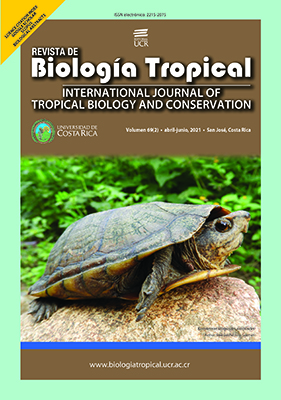Abstract
Introduction: The soil seed bank is one of the most important ecological indicators for evaluating and monitoring the resilience of degraded ecosystems. Likewise, ecological restoration indicators are currently used in areas affected by the rupture of the Fundão tailings dam in Mariana, Minas Gerais, Brazil. Objective: To evaluate the seed bank at two depths of areas affected by mining tailings, Mariana municipality, Minas Gerais, Brazil. Methods: 15 samples (40 × 40 cm) were collected per level of depth, in the upper layer (Depth1, P1 = 0-2.5 cm), and lower layer (Depth2, P2 = 2.5-5.0 cm) of the mining tailings to survey the viable seed bank, which was later placed in a greenhouse for germination and seedling identification. The samples were placed in plastic trays to germinate in the nursery, then counted and identified weekly for six months. Results: The results showed that there is a seed bank in the surface layers of accumulated mining tailings in the affected areas of Mariana, with a marked difference between depths in terms of species richness and density of individuals. Higher species richness and number of individuals were observed in P1, (1 165 germinated seeds), belonging to 18 families and 47 species, in comparison to P2 (197 individuals), belonging to 12 families and 23 species. Probably the seed bank of layer P1 is influenced by the rain of seeds from the nearby forest. On the other hand, the P2 seed bank can be characteristic of mining tailings. Conclusions: Seed bank patterns can have positive effects on forest resilience at the local-scale, due to the high proportion of native, pioneer and anemochorical species of early successional stages.
##plugins.facebook.comentarios##

This work is licensed under a Creative Commons Attribution 4.0 International License.
Copyright (c) 2021 Carolina Viana Da Silva, Sebastião Venâncio Martins, Pedro Manuel Villa, Gabriel Correa Kruschewsky, Andreia Aparecida Dias, Fabio Haruki Nabeta



